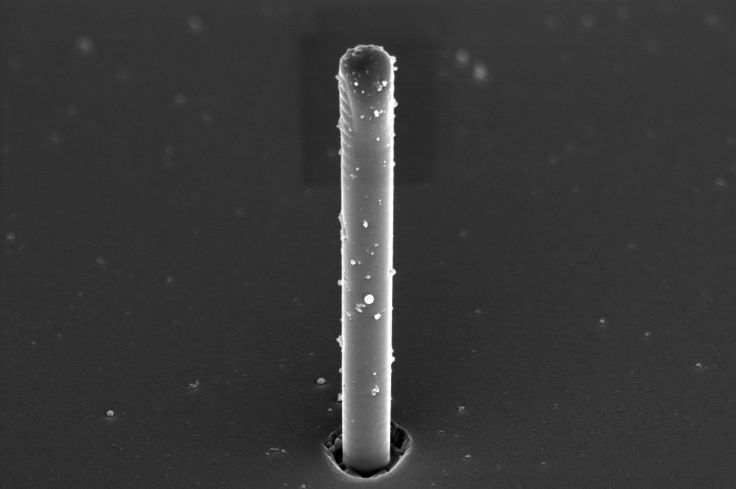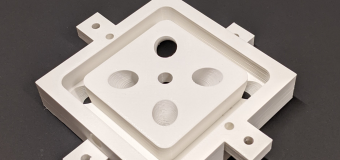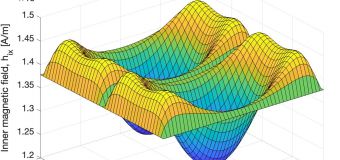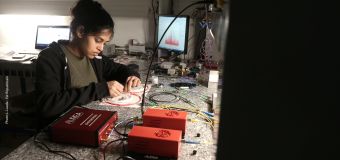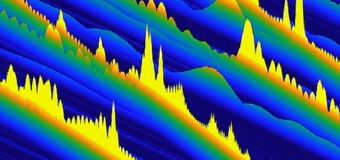You are here
Laser nanofabrication: nanopillars emerging from sapphire
Femtosecond lasers are well known for their ability to cut materials with extreme precision and texture surfaces. A FEMTO-ST team has achieved a world first, opening up a new use for these lasers.
A single laser pulse can be used to generate high aspect ratio nanopillars on sapphire, by moving a large volume of material from the inside of the material to the surface. This work is published in « Laser & Photonics Reviews » and promoted by The French National Center for Scientific Research (CNRS).
Their approach is based on the use of tubular beams, also known as higher-order Bessel beams, which induce a cylindrical micro-explosion in the material. Depending on the laser intensity, this micro-explosion can displace a nano-pillar from the material (see illustration) or even create a nano-jet subject to hydrodynamic instabilities, freezing to form structures with a high aspect ratio and varied morphologies. These nano-pillars typically have a diameter of 800 nm and heights of up to 15 µm.
Interestingly, the resulting structures are crystalline. These nano-pillars could therefore find applications in fields as diverse as metamaterials, mechanics, healthcare, sensors, photonics and phonics. From a fundamental point of view, these results also demonstrate the ability to confine laser-matter interaction to scales of the order of fifty nanometers, even in extreme thermodynamic regimes.
Contact : François Courvoisier
https://doi.org/10.1002/lpor.202300687
